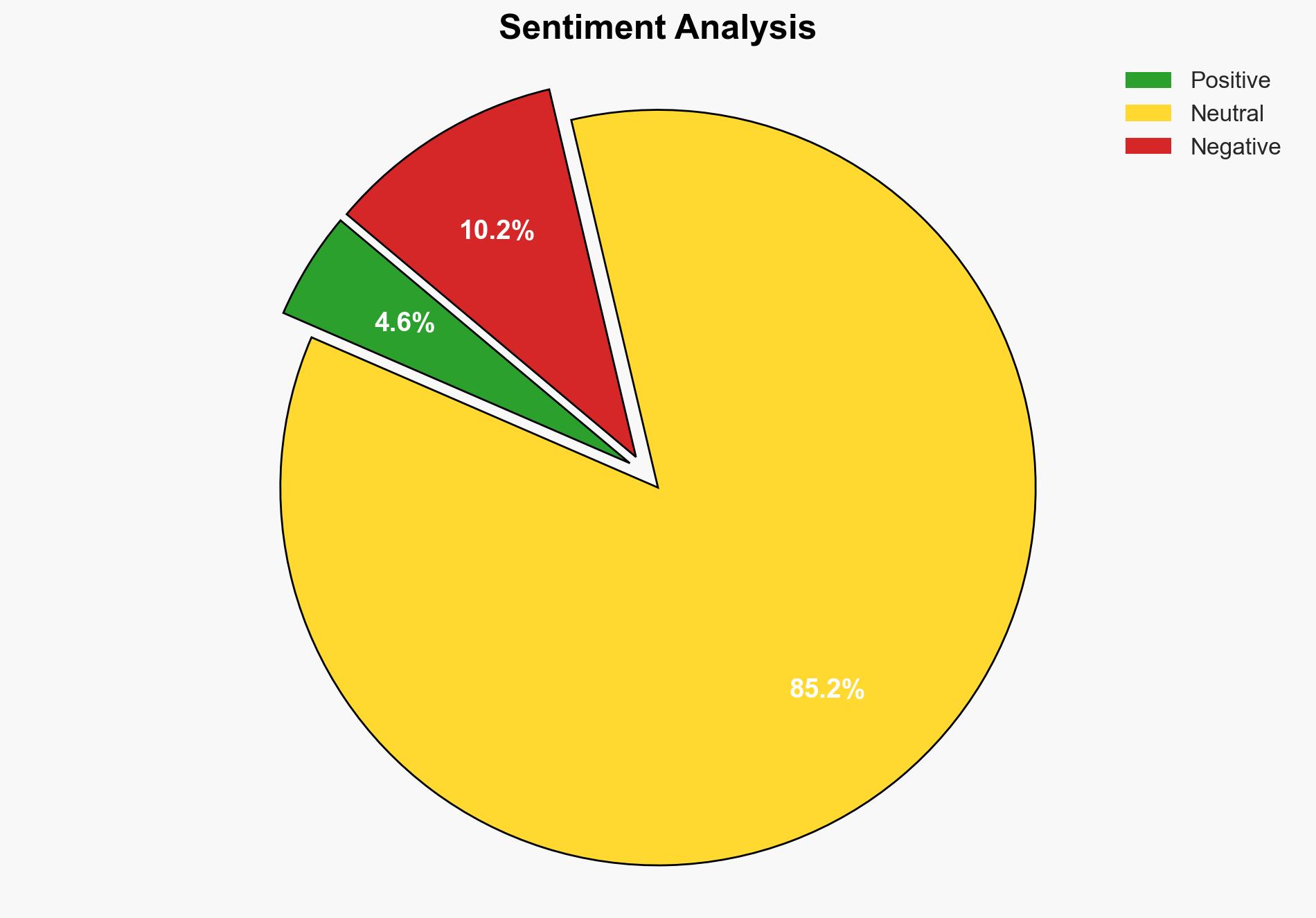Eurofiber confirms November 13 hack data theft and extortion attempt – Securityaffairs.com
Published on: 2025-11-19
AI-powered OSINT brief from verified open sources. Automated NLP signal extraction with human verification. See our Methodology and Why WorldWideWatchers.
Intelligence Report: Eurofiber Data Breach and Extortion Attempt
1. BLUF (Bottom Line Up Front)
With a moderate confidence level, it is assessed that the Eurofiber data breach was primarily an opportunistic attack exploiting a known vulnerability in their ticket management system. The most supported hypothesis is that the attackers aimed for financial gain through extortion. Recommended actions include enhancing cybersecurity measures, conducting a thorough forensic investigation, and improving communication with stakeholders.
2. Competing Hypotheses
Hypothesis 1: The breach was an opportunistic attack exploiting a known vulnerability for financial extortion. This is supported by the use of a SQL injection to access sensitive data and the subsequent extortion attempt.
Hypothesis 2: The breach was a targeted attack by a competitor or state-sponsored actor aiming to disrupt Eurofiber’s operations and damage its reputation. This hypothesis is less supported due to the lack of evidence indicating a sophisticated or targeted attack pattern.
Hypothesis 1 is more likely given the evidence of a SQL injection and the extortion attempt, which are common tactics for financially motivated cybercriminals.
3. Key Assumptions and Red Flags
Assumptions: It is assumed that the attackers exploited a known vulnerability and that Eurofiber’s systems were not fully patched. It is also assumed that the extortion attempt was genuine and not a diversion.
Red Flags: The downplaying of the incident by Eurofiber could indicate an attempt to minimize reputational damage. The lack of detailed information about the breach and the attackers raises questions about the completeness of the disclosed information.
4. Implications and Strategic Risks
The breach could lead to significant reputational damage for Eurofiber, potentially affecting customer trust and future business opportunities. If sensitive operational data were compromised, there is a risk of further exploitation by other threat actors. The incident highlights vulnerabilities in the digital infrastructure sector, which could lead to increased regulatory scrutiny and operational costs.
5. Recommendations and Outlook
- Conduct a comprehensive forensic investigation to identify the full extent of the breach and ensure all vulnerabilities are patched.
- Enhance cybersecurity measures, including regular vulnerability assessments and employee training on phishing and social engineering threats.
- Improve transparency and communication with stakeholders to maintain trust and comply with legal obligations.
- Best-case scenario: The breach is contained, and Eurofiber strengthens its cybersecurity posture, preventing future incidents.
- Worst-case scenario: Further breaches occur, leading to significant financial losses and regulatory penalties.
- Most-likely scenario: Eurofiber addresses the immediate vulnerabilities, but reputational damage and increased scrutiny persist in the short term.
6. Key Individuals and Entities
No specific individuals are mentioned in the source text. Key entities include Eurofiber, SOCRadar, and the French National Cybersecurity Agency (ANSSI).
7. Thematic Tags
Cybersecurity, Data Breach, Extortion, Vulnerability Exploitation, Digital Infrastructure
Structured Analytic Techniques Applied
- Adversarial Threat Simulation: Model and simulate actions of cyber adversaries to anticipate vulnerabilities and improve resilience.
- Indicators Development: Detect and monitor behavioral or technical anomalies across systems for early threat detection.
- Bayesian Scenario Modeling: Quantify uncertainty and predict cyberattack pathways using probabilistic inference.
- Network Influence Mapping: Map influence relationships to assess actor impact.
Explore more:
Cybersecurity Briefs ·
Daily Summary ·
Support us





